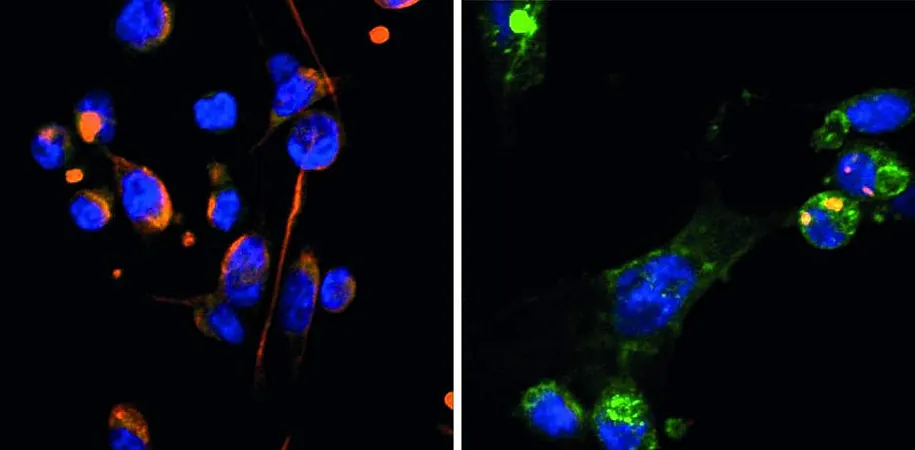
Unlocking the Secrets of Dormant Breast Cancer Cells: Why They Wake Up With a Vengeance
2025-04-22
Author: John Tan
The Silent Threat of Dormant Cancer Cells
Breast cancer treatments have advanced significantly, but a lurking danger remains: some cancer cells can hibernate undetected for decades, only to resurface more aggressive than ever. This phenomenon is due to cells that detach from the primary tumor and enter a dormant state in body tissues.
Revealing the Mechanisms of Dormancy and Aggression
A groundbreaking study from Prof. Yosef Yarden's lab at the Weizmann Institute, published in *Science Signaling*, sheds light on how breast cancer cells slip into dormancy and how they awaken. The research indicates that breast tissue undergoes various transformations throughout a woman’s life, impacting how cancer cells behave.
Throughout stages of development—from embryonic growth to breastfeeding—breast cells can switch forms. They can revert to an earlier, hyperactive state, facilitating malignant growth or become dormant, slowing down their activity. This duality is crucial for the cancer cells' survival.
Inducing Dormancy: A New Strategy?
Understanding these processes led the researchers to believe they could induce dormancy in aggressive breast cancer cells, such as those identified as triple-negative. By increasing levels of specific proteins called OVOL, which are essential for cellular maturation, they found they could halt the cancer lifecycle and trigger dormancy.
In experiments involving female mice implanted with human tumor tissues, over-expression of OVOL proteins significantly inhibited tumor growth.
The Double-Edged Sword of OVOL Proteins
However, it might not be all good news. While OVOL1 slows down cancer in the short term, it could enable these malignant cells to survive in a dormant state for years. When estrogen levels fluctuate—typically decreased due to changes in body weight or hormonal balance—these dormant cells may awaken with increased aggressiveness.
The Hormonal Connection: A Risk Factor?
The study also revealed that low estrogen receptor levels coupled with high OVOL1 levels correlate with more aggressive cancer and poorer survival rates. This suggests that weight gain in middle-aged women could heighten the risk of previously dormant cancer returning.
The Dark Side of Dormancy: Why Aggression Rises Upon Awakening
One critical question the researchers sought to answer was the aggressive nature of cancer cells when they awaken from dormancy. By exploring the molecular pathways influenced by OVOL1, they uncovered alarming evidence of free radical accumulation leading to cellular damage.
This unexpected finding indicates that dormant cells undergo significant mutations that compromise their genetic integrity, preparing them to emerge as even more aggressive.
A New Understanding of Cancer Dormancy and its Risks
"Dormant cancer cells are not simply in a resting state; they are actively accumulating mutations during this so-called sleep. This sets the stage for aggressive resurgence," Yarden warns. This research opens the door for potential strategies to manage or prevent dormant cancer cells from reactivating, potentially transforming the landscape of breast cancer treatment.



 Brasil (PT)
Brasil (PT)
 Canada (EN)
Canada (EN)
 Chile (ES)
Chile (ES)
 Česko (CS)
Česko (CS)
 대한민국 (KO)
대한민국 (KO)
 España (ES)
España (ES)
 France (FR)
France (FR)
 Hong Kong (EN)
Hong Kong (EN)
 Italia (IT)
Italia (IT)
 日本 (JA)
日本 (JA)
 Magyarország (HU)
Magyarország (HU)
 Norge (NO)
Norge (NO)
 Polska (PL)
Polska (PL)
 Schweiz (DE)
Schweiz (DE)
 Singapore (EN)
Singapore (EN)
 Sverige (SV)
Sverige (SV)
 Suomi (FI)
Suomi (FI)
 Türkiye (TR)
Türkiye (TR)
 الإمارات العربية المتحدة (AR)
الإمارات العربية المتحدة (AR)